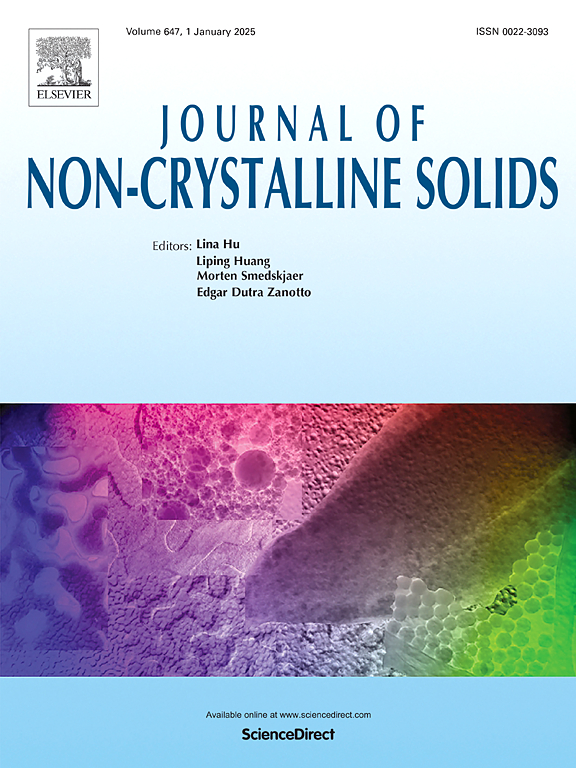酸处理形成微孔结构的玻璃的生产和表征
IF 3.5
3区 材料科学
Q1 MATERIALS SCIENCE, CERAMICS
引用次数: 0
摘要
本研究探讨了特定成分的玻璃在酸溶液中搅拌时气孔的形成。玻璃样品要么从商业来源获得,要么通过传统的熔融淬火方法制备。酸处理后,用氮吸附测量对样品进行了表征,结果显示20个样品中有13个出现了孔隙。这些样品的布鲁诺尔-埃米特-泰勒(BET)表面积范围为283.1 ~ 605.6 m2/g。利用x射线荧光光谱仪(XRF)分析了玻璃的元素组成,表明孔隙的形成与高含量的酸敏元素有关,如Na、K、Mg、Ca、Sr、Ba、B、Al、Pb和Fe。这些元素的洗脱发生在酸敏元素的总摩尔比超过Si的样品中,导致富硅结构(>93.7%)。不同元素组成的样品孔隙形成速率不同。本文章由计算机程序翻译,如有差异,请以英文原文为准。
Production and characterization of glasses that develop microporous structures through acid treatment
This study explores the formation of porosity in glass of specific compositions when stirred in an acid solution. Glass samples were either obtained from commercial sources or prepared via the traditional melt-quenching method. After acid treatment, the samples were characterized using nitrogen adsorption measurements, revealing that 13 out of 20 samples developed porosity. The Brunauer–Emmett–Teller (BET) surface area of these samples ranged from 283.1 to 605.6 m2/g. The elemental composition of the glass was analyzed using an X-ray fluorescence spectrometer (XRF), which indicated that the development of porosity was associated with a high content of acid-sensitive elements, such as Na, K, Mg, Ca, Sr, Ba, B, Al, Pb, and Fe. The elution of these elements occurred in samples where the total molar ratio of acid-sensitive elements exceeded that of Si, resulting in a silica-rich structure (>93.7%). The pore formation rates varied among the samples with different elemental compositions.
求助全文
通过发布文献求助,成功后即可免费获取论文全文。
去求助
来源期刊

Journal of Non-crystalline Solids
工程技术-材料科学:硅酸盐
CiteScore
6.50
自引率
11.40%
发文量
576
审稿时长
35 days
期刊介绍:
The Journal of Non-Crystalline Solids publishes review articles, research papers, and Letters to the Editor on amorphous and glassy materials, including inorganic, organic, polymeric, hybrid and metallic systems. Papers on partially glassy materials, such as glass-ceramics and glass-matrix composites, and papers involving the liquid state are also included in so far as the properties of the liquid are relevant for the formation of the solid.
In all cases the papers must demonstrate both novelty and importance to the field, by way of significant advances in understanding or application of non-crystalline solids; in the case of Letters, a compelling case must also be made for expedited handling.
 求助内容:
求助内容: 应助结果提醒方式:
应助结果提醒方式:


